Onward and outward...published at 20:10
New Horizons is now soaring away from Pluto but it is still working to collect information.
It hasn't even paused yet to send its "phone home" message to say all is well!
Nasa's spacecraft New Horizons soared past Pluto at 12:50 BST on 13 July
After a tense wait, its first post-flyby communication was received at 01:52 BST on 14 July
The probe's historic early pictures of Pluto included a close-up of mountains over 3,000m high
Both the dwarf planet and its giant moon Charon appear to have surprisingly active geology
A bright, heart-shaped region on Pluto's surface was named Tombaugh Regio after the planet's discoverer
Jonathan Webb, Bernadette McCague, Matt McGrath and Paul Rincon
New Horizons is now soaring away from Pluto but it is still working to collect information.
It hasn't even paused yet to send its "phone home" message to say all is well!
 Jonathan Amos
Jonathan Amos
Science correspondent, BBC News
So, now we’ve got some proper colour images of Pluto and its main moon, Charon, taken on Monday and returned prior to the flyby.
They come from New Horizons’ Ralph camera. It’s the information from this camera that was used to colour the spectacular black-and-white image of Pluto released earlier on Tuesday, taken with the long-range camera, Lorri. The advantage of Lorri is that it has four times the resolution of Ralph, but Ralph has some special tricks up its sleeve that Lorri doesn’t.
 Image source, NASA/JHUAPL/SWRI
Image source, NASA/JHUAPL/SWRIOne of the things you can do with its pictures is stretch the colours to amplify property differences in surface materials. You wouldn’t ordinarily see such differences in just a black-and-white image. When you do this stretching with Pluto, you see its “heart” is actually two very distinct regions. Two distinct ventricles, if you like. The north pole of Pluto looks very yellow in this treatment, and we also see linear features starting to emerge.
All of this can hint at differences in composition and surface processes.
“From the ground, we knew there were a lot of colours on Pluto, but we never imagined anything like this,” said Cathy Olkin, the New Horizons deputy project scientist.
But remember, these colours are exaggerated.
The same approach to Charon highlights its unusual dark pole. Quite why it is so dark is a mystery, but the Ralph data is opening ideas. One is that atmospheric molecules are coming off Pluto and hitting Charon. They bounce around and stick to where it’s coldest – the poles. Once stuck, they get processed by ultraviolet light and cosmic rays to produce more complex – and darker – molecules referred to as tholins.
This is science on the go!
Email: haveyoursay@bbc.co.uk
Alan Puckey:
Let's hope mankind never loses the ambition to explore our place in the wider universe we exist in. If only we could achieve this amount of collaboration across our little world - for the peace of all our people.
Email: haveyoursay@bbc.co.uk
Timothy Smith:
Come 11:00p EST, I'll have on my NASA shirt, have popcorn and beer ready, and have my TV tuned to NASA TV. Let's do this!
As they endure the long wait before receiving confirmation from New Horizons that it has safely flown past Pluto, scientists at mission headquarters have been outlining some of the features that might become apparent on the dwarf planet when the probe begins to download images tomorrow evening. There have been discussions about the red colour, tectonic plates, even mountains!
The bright white area at the bottom of the most recent image, rapidly dubbed the "heart" has provoked much comment on social media.
Allow X content?
This article contains content provided by X. We ask for your permission before anything is loaded, as they may be using cookies and other technologies. You may want to read X’s cookie policy, external and privacy policy, external before accepting. To view this content choose ‘accept and continue’.
Others have been using the flyby as an opportunity to re-open old wounds about Pluto's status - planet or dwarf planet?
Allow X content?
This article contains content provided by X. We ask for your permission before anything is loaded, as they may be using cookies and other technologies. You may want to read X’s cookie policy, external and privacy policy, external before accepting. To view this content choose ‘accept and continue’.
And some have used the long gap between flyby and "phone home" to polish their artistic skills....
Allow X content?
This article contains content provided by X. We ask for your permission before anything is loaded, as they may be using cookies and other technologies. You may want to read X’s cookie policy, external and privacy policy, external before accepting. To view this content choose ‘accept and continue’.
Email: haveyoursay@bbc.co.uk
Richard Bevan:
A wonderful achievement – 4 billion kilometres, 9 ½ years and 72 seconds early. If only the trains on my morning commute were that reliable!!
Email: haveyoursay@bbc.co.uk
Tom Spencer:
Truly an epic moment in the history of discovery for mankind. It seems limitless what we can achieve when we put our minds to the task! Hooray for NASA!
Email: haveyoursay@bbc.co.uk
Siobhán, Norwich:
I find it a bit surreal knowing that something sent into space when I was 19 is now doing what it was built to do. However as a teacher, seeing the look of bewilderment on my children's faces as they comprehend the fact that the photo of Pluto has come about from a journey that began when they were two is amazing. Being able to share this with them through the live conference, the live updates, Newsround and BBC News is what science is all about - bringing awe and wonder to all!
Can't wait for more pictures to arrive.
 Jonathan Amos
Jonathan Amos
Science correspondent, BBC News
Here’s looking at you, kid! The Rosetta probe has taken a picture of Pluto. Okay, Europe’s spacecraft, which orbits Comet 67P, is a long, long way away from the dwarf planet, but the dot-like picture is still neat. Why? Because both objects – Comet 67P and Pluto – are Kuiper Belt objects.
The comet likely originates from that same zone of the Solar System where the dwarf planet continues to live. Somehow, the icy dirt-ball got disturbed and sent into the inner Solar System. In fact, we think there are quite a few KB objects that have done this, and not just comets.
Triton, the moon of Neptune, is very probably a one-time Kuiper Belt resident that got thrown inwards, only to be captured in the gravity of the gas giant. Today, Rosetta and Comet 67P are 194 million km from the Sun. New Horizons and Pluto, on the other hand, are 4.9 billion km from the Sun. Both are great space missions. If 2014 was the “year of the comet”, then 2015 is very definitely the “year of Pluto”.
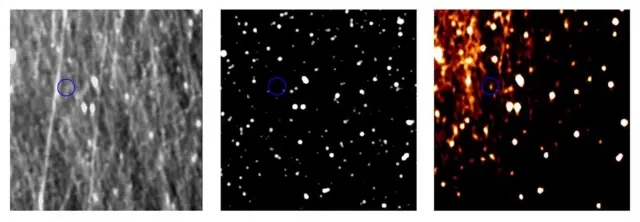 Image source, ESA/Rosetta/MPS for OSIRIS Team
Image source, ESA/Rosetta/MPS for OSIRIS TeamEmail: haveyoursay@bbc.co.uk
In response to our earlier post about New Horizons radio signals being received in Australia, Frank Desmond emails:
Please tell me that that tracking station is, literally, The Dish as seen in the movie from the year 2000 about Apollo 11 landing on the moon.
(The part I still remember is the school orchestra asked to play the American National Anthem and so start playing...... the Hawaii 5-0 theme.)
Actually Frank, that dish was in Parkes in New South Wales. The tracking station receiving New Horizons data is just outside Canberra.
Coincidentally, it would take about as long to drive between the two, external as it does for NH radio signals to transmit home from Pluto!
The historic flyby of the dwarf planet plainly isn't everyone's cup of tea - or coffee....
Allow X content?
This article contains content provided by X. We ask for your permission before anything is loaded, as they may be using cookies and other technologies. You may want to read X’s cookie policy, external and privacy policy, external before accepting. To view this content choose ‘accept and continue’.
 Jonathan Amos
Jonathan Amos
Science correspondent, BBC News
The world’s media descend on to the stage after the press briefing to talk to Alan Stern, New Horizons’ principal investigator.
I reach out to grab his hand to offer congratulations. He hangs on to it, and we discuss the significance of the day.
“Aren’t we an amazing species, a truly amazing species?” he says.
Allow X content?
This article contains content provided by X. We ask for your permission before anything is loaded, as they may be using cookies and other technologies. You may want to read X’s cookie policy, external and privacy policy, external before accepting. To view this content choose ‘accept and continue’.
Mission chief Alan Stern says there is evidence of "surface activity" on Pluto, a tantalising hint of earth-like tectonics "in its past or even its present".
But might it snow?
Quote Message“It is clearly a world where both geology and atmosphere, climatology, play a role. Pluto has strong atmospheric cycles, it snows on the surface, the snows sublimate and go back into the atmosphere each 248 year orbit…”
Alan Stern, New Horizons principal investigator
A reminder, as mentioned earlier, that there is a very small chance New Horizons will come a cropper.
The team, led by principal investigator Prof Alan Stern, sounds confident!
Nasa has released some images showing tension and jubilation among members of the New Horizons team, waiting to see the fresh image of Pluto.
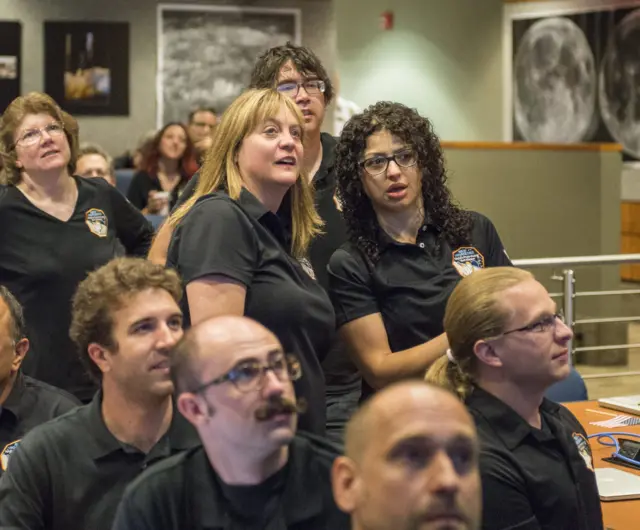 Image source, EPA/NASA
Image source, EPA/NASA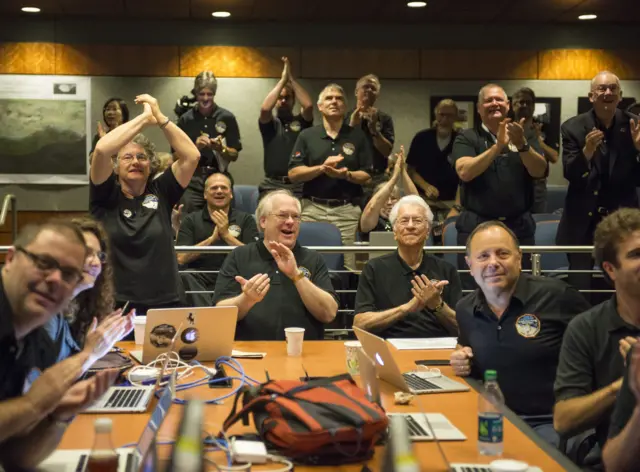 Image source, EPA/NASA
Image source, EPA/NASAAs word of its flyby, and the last image it took beforehand, travel around the world - it's worth remembering that New Horizons is still frantically acquiring photos and measurements.
Shortly after passing Pluto, it made its closest approach to the dwarf planet's biggest moon, Charon, at 13:04 BST.
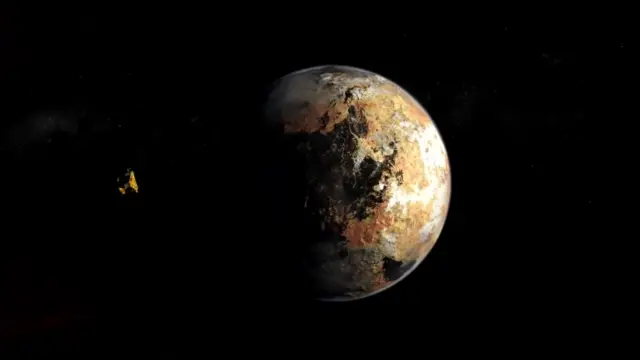 Image source, NASA
Image source, NASAWe'll hear from it again - with any luck - in just over 12 hours' time.
The briefing is underway - click the "Live Coverage" tab above to watch.
It's a very, very big day for the New Horizons team.
Quote MessageThis is true exploration...that view is just the first of many rewards the team will get. Pluto is an extraordinarily complex and interesting world.
Alan Grunsfeld, Nasa associate administrator
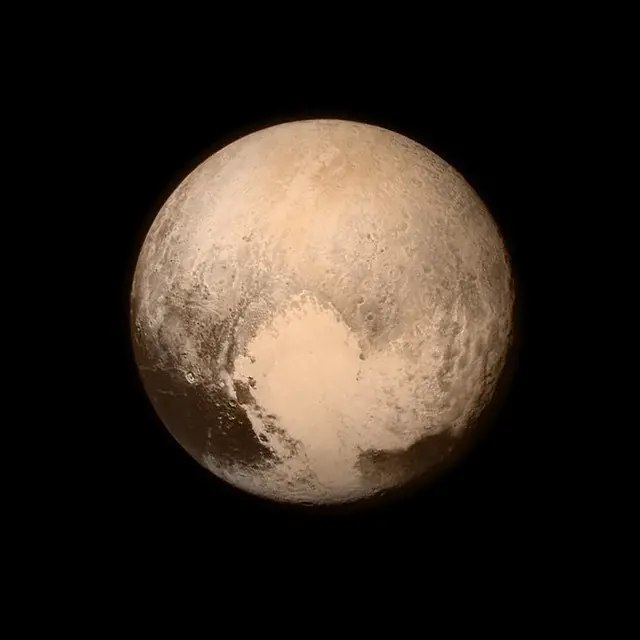 Image source, Nasa
Image source, NasaWow. 15 minutes out from New Horizons' closest approach - this is what the mission control room looked like!
As you've heard from our science correspondent Jonathan Amos - the probe is too busy to phone home until much later tonight.
You'll get all the updates right here!
A tweet from our science editor David Shukman, also at the operations centre in Maryland: